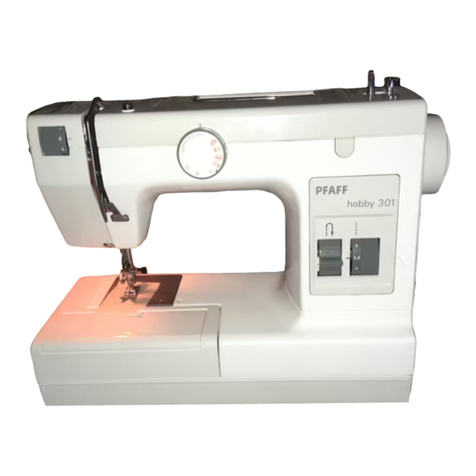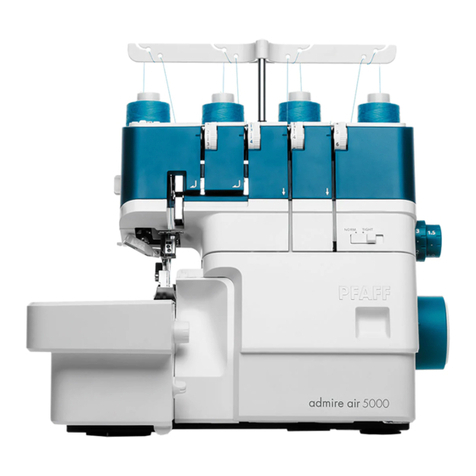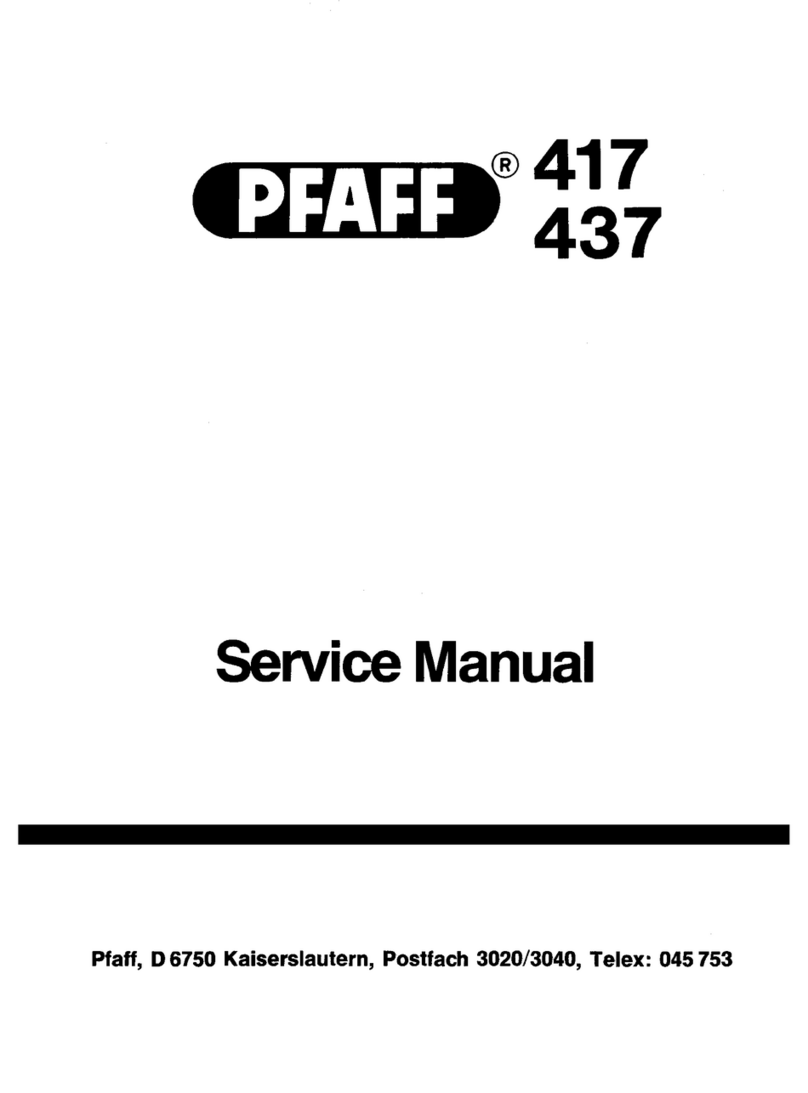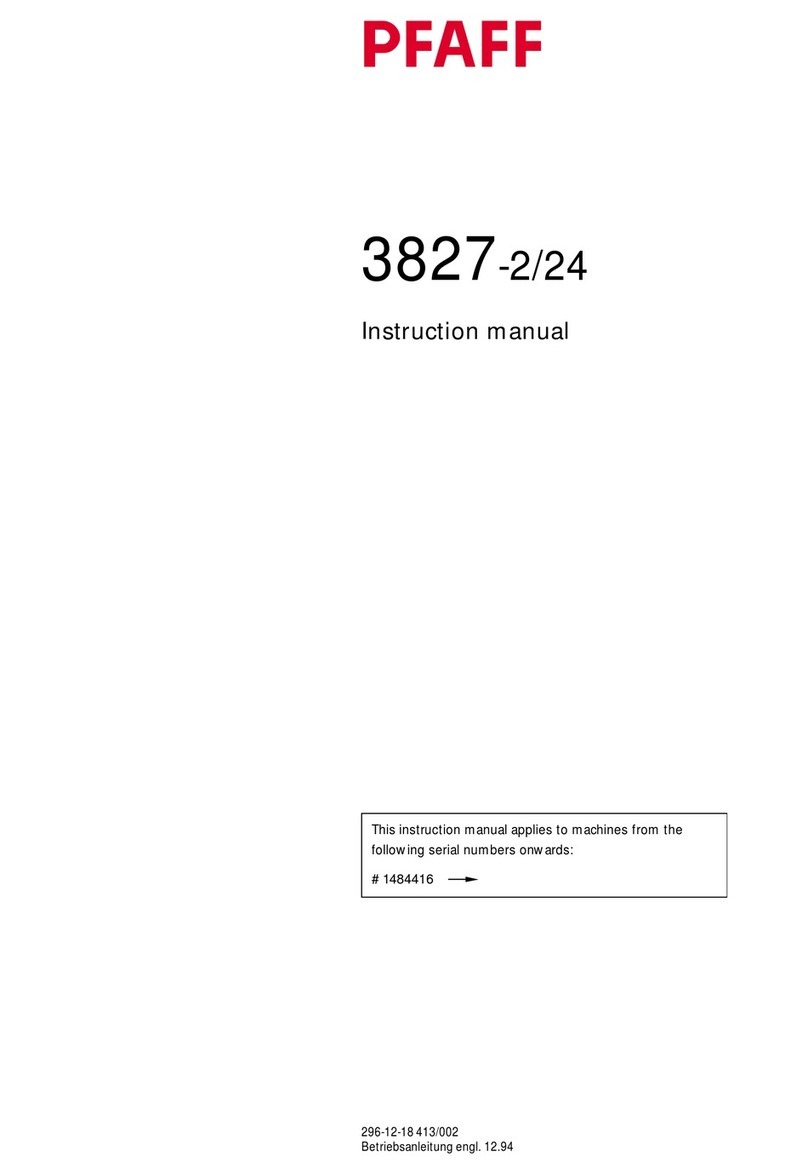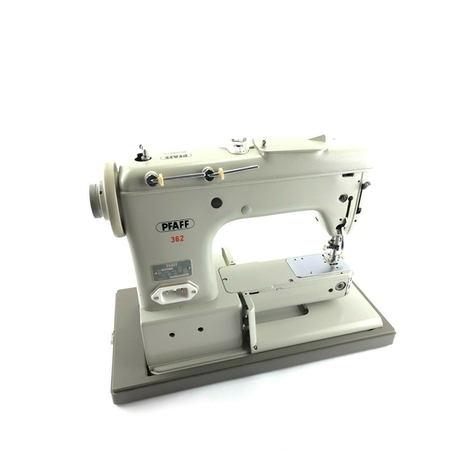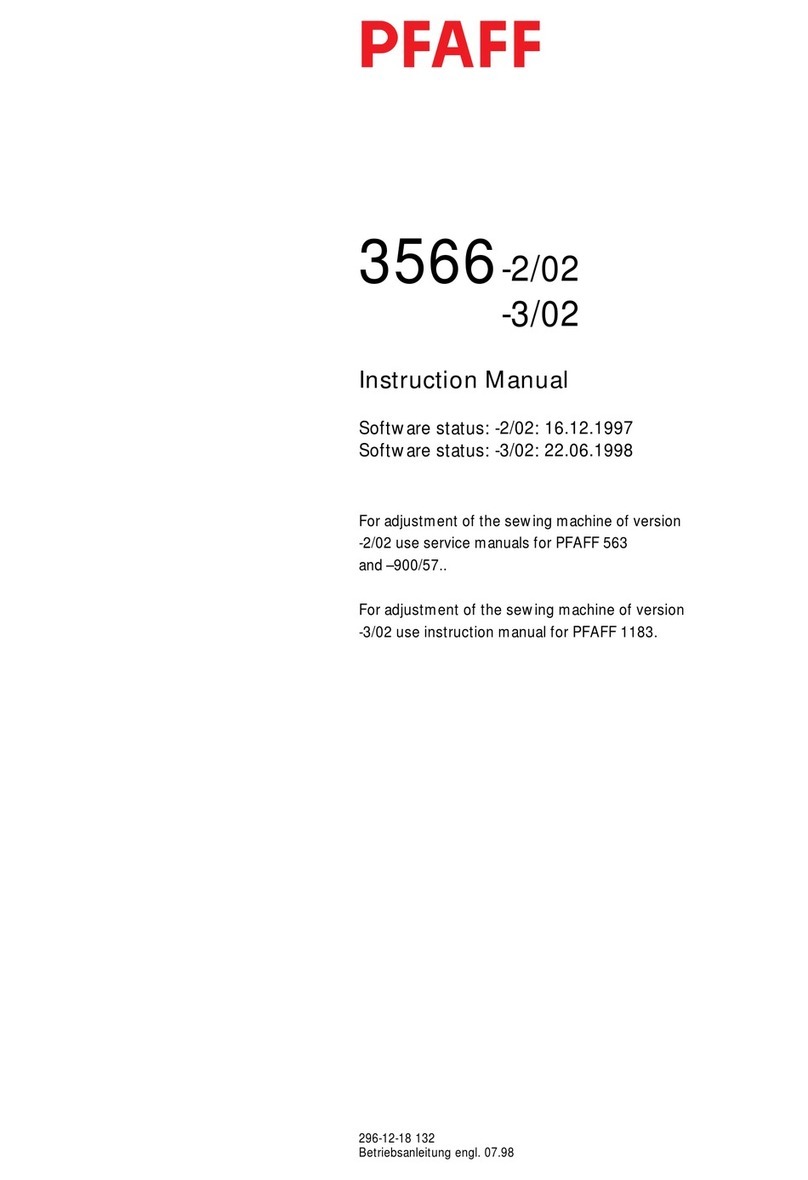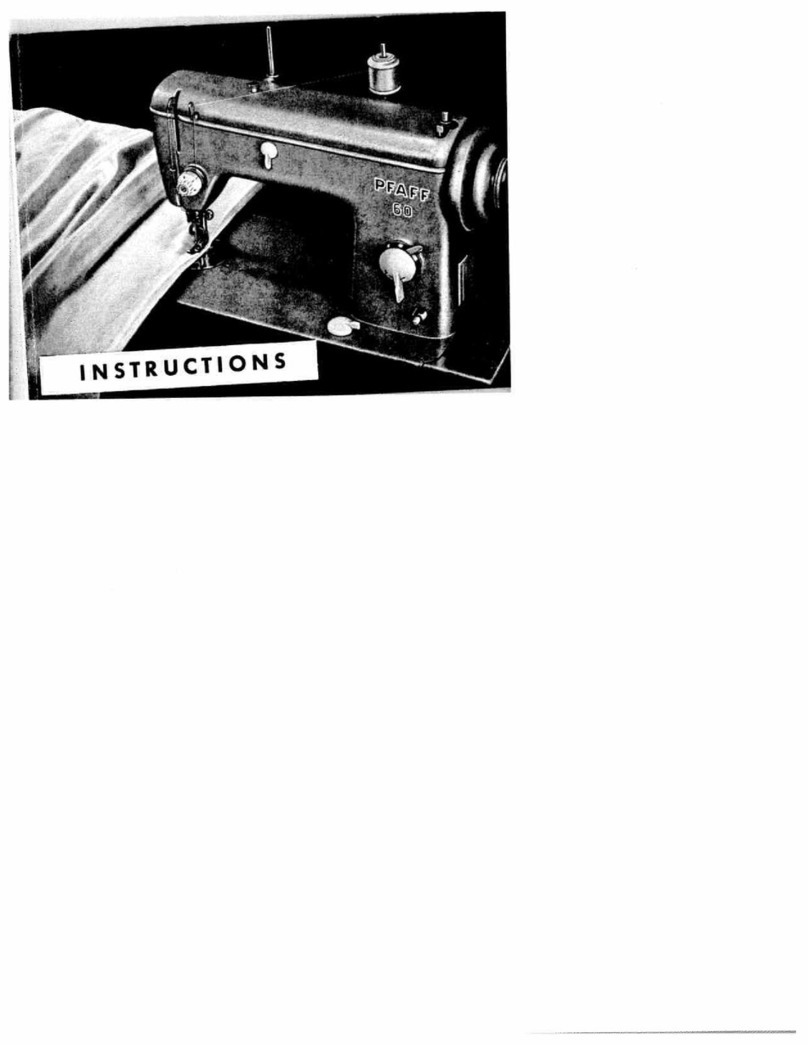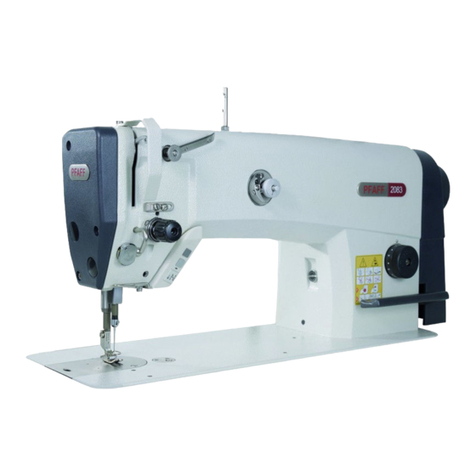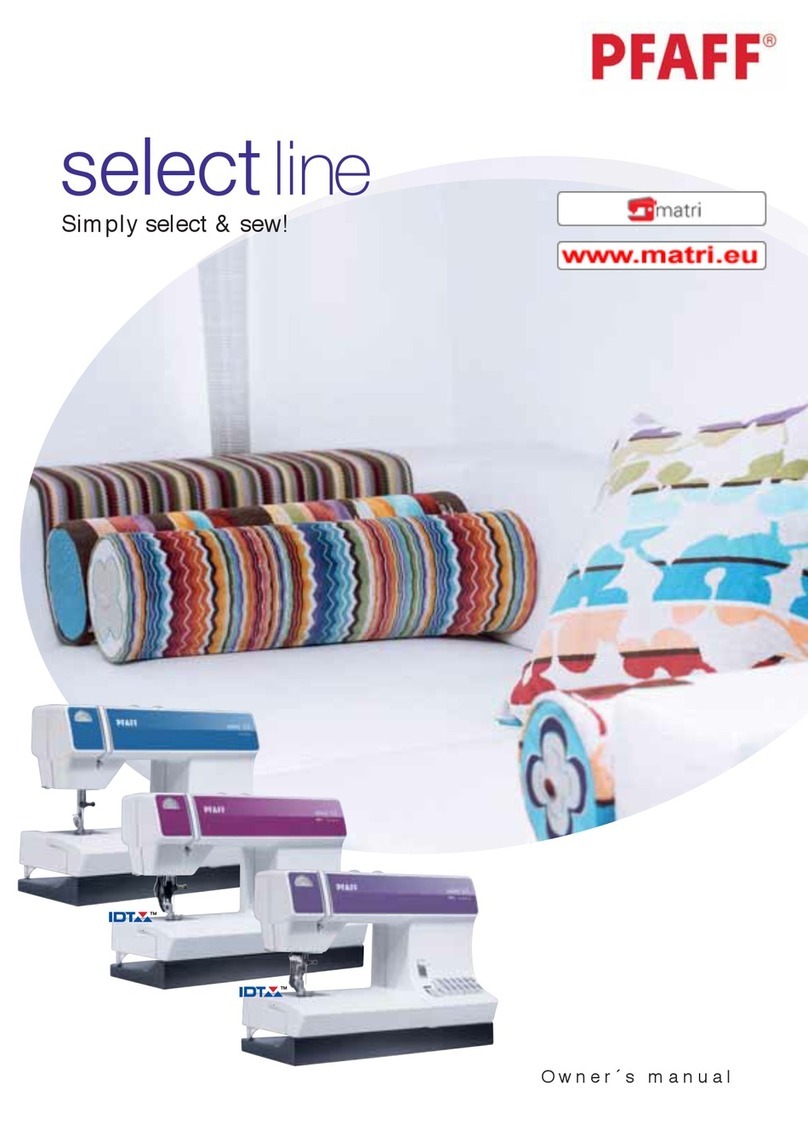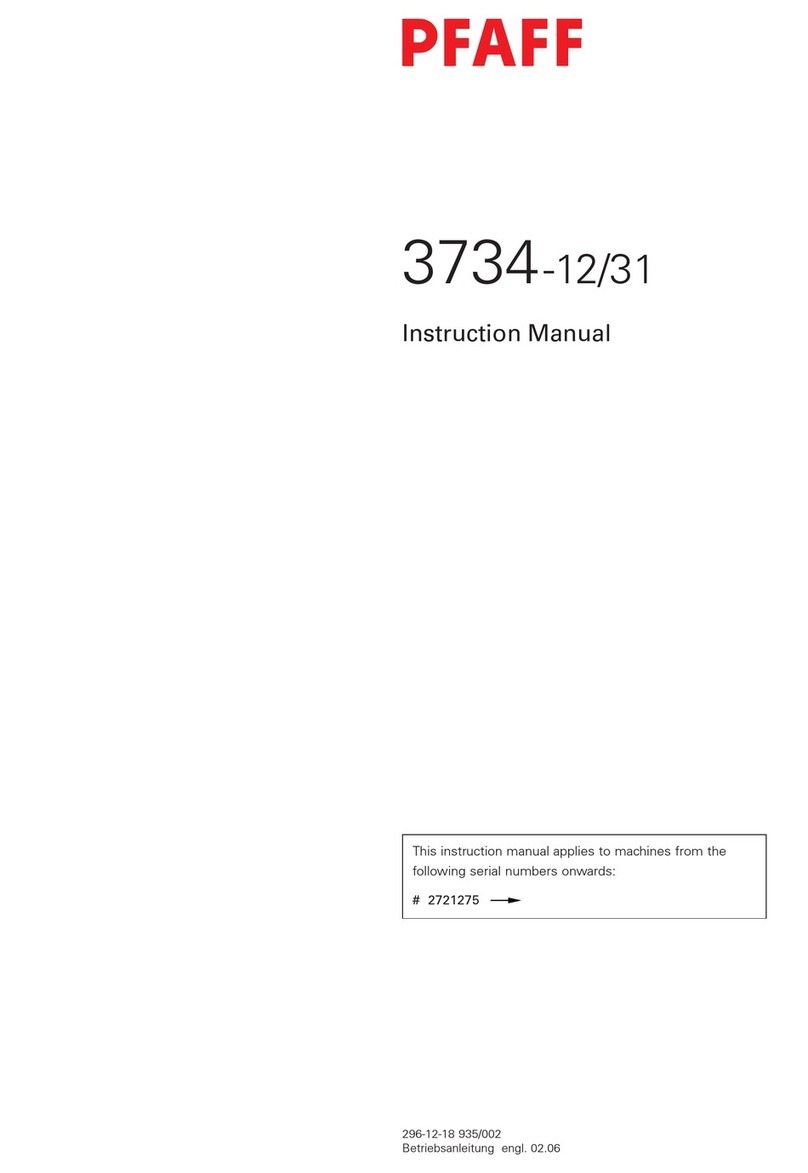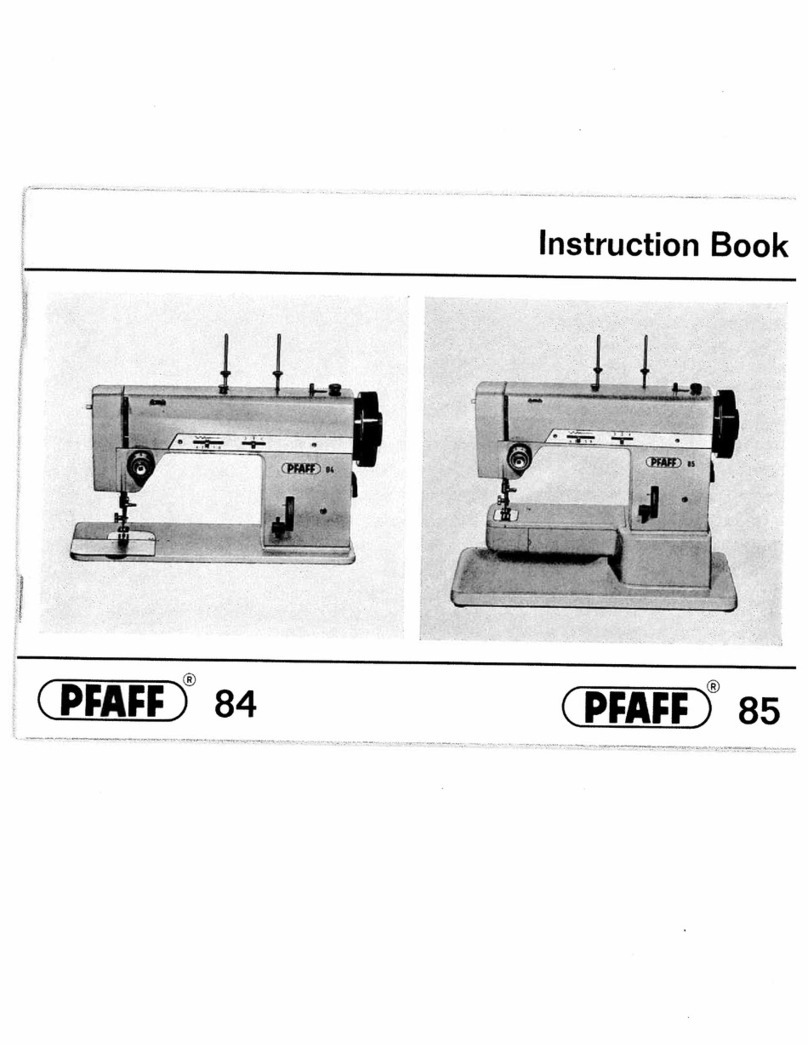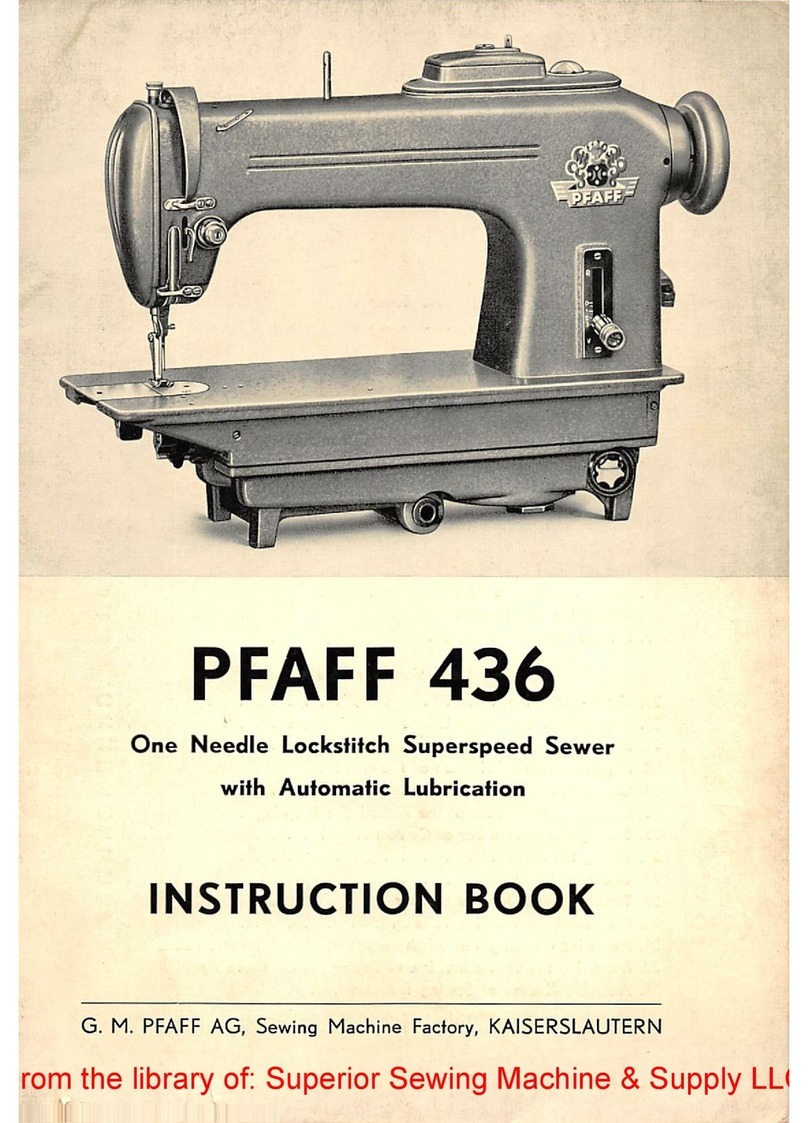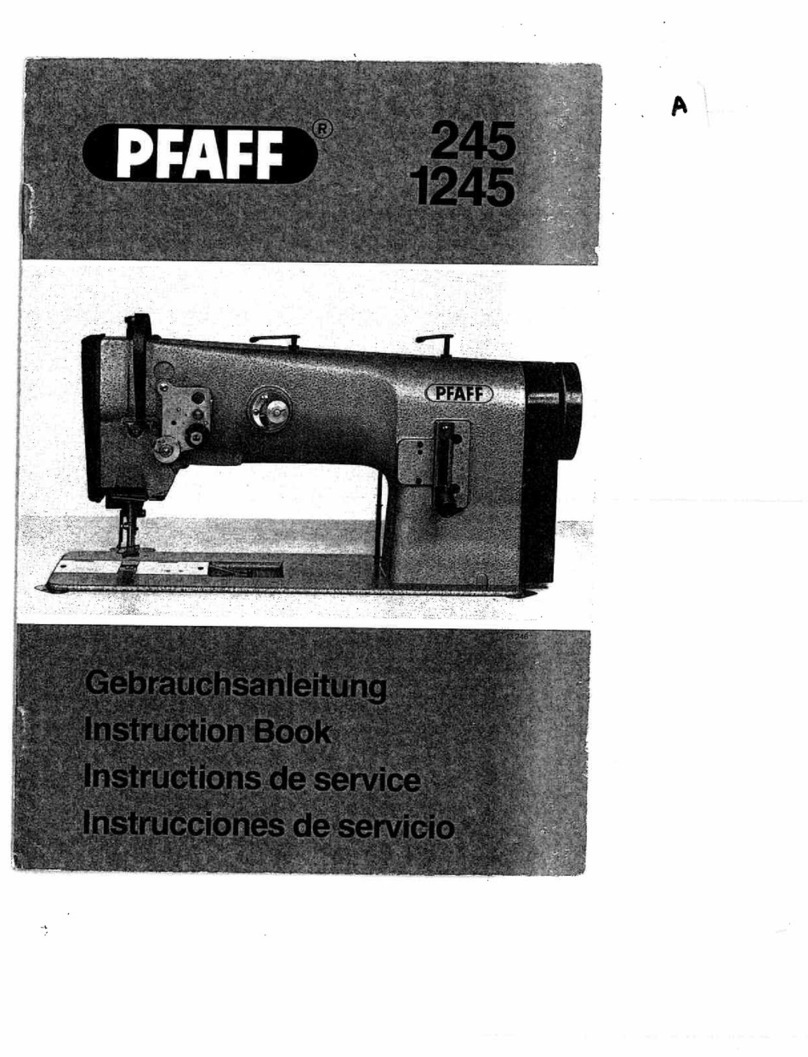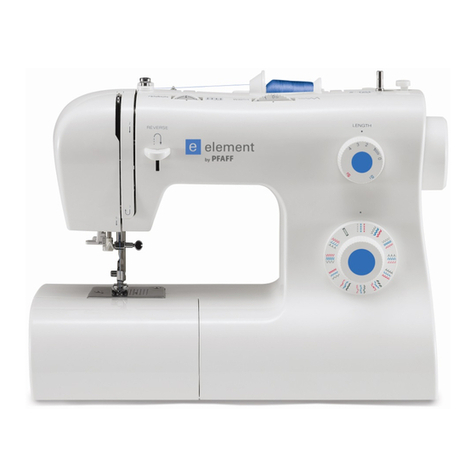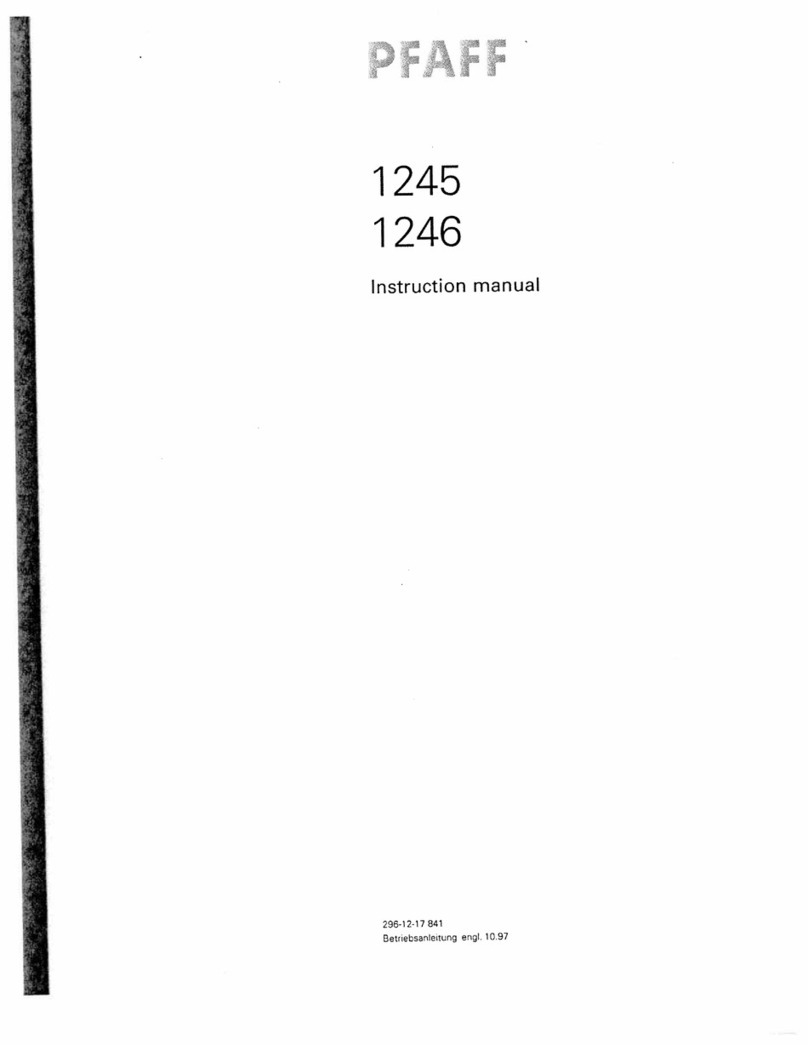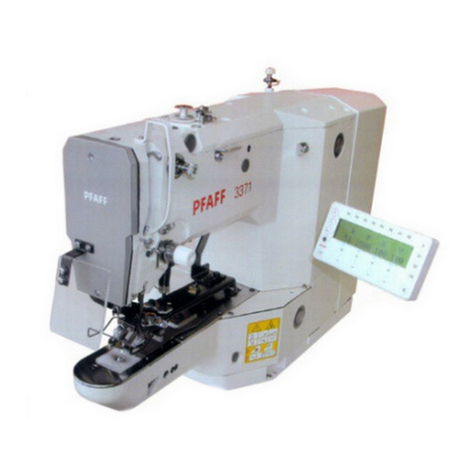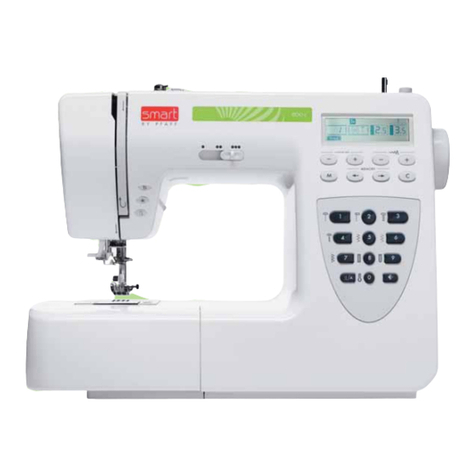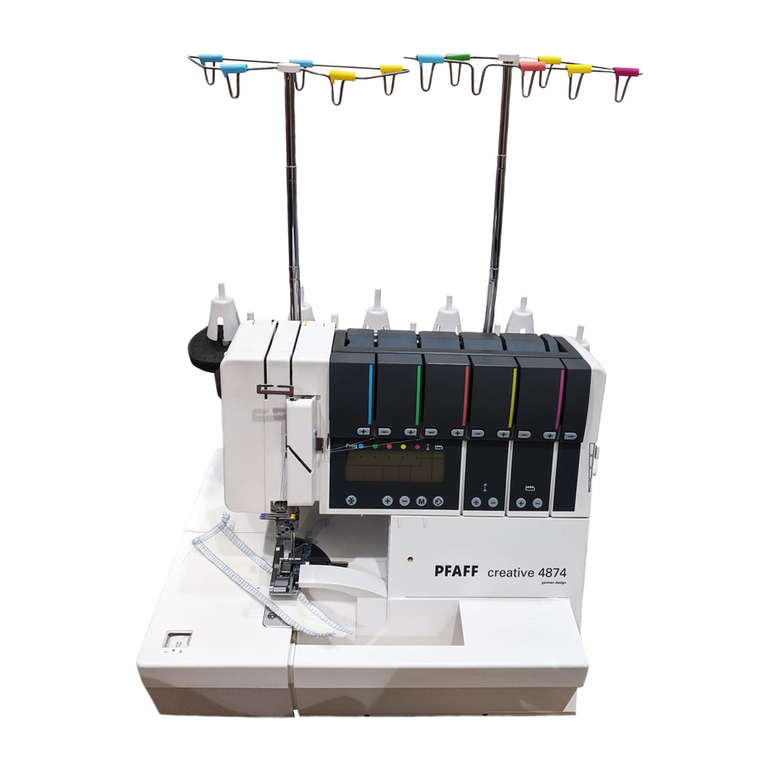
Contents
Contents ................................................................................. Chapter - Page
9Preparation .................................................................................................................. 9 - 1
9.01 Inserting the needle ...................................................................................................... 9 - 1
9.02 Winding the bobbin thread, adjusting the thread tension .............................................. 9 - 2
9.03 Removing/inserting the bobbin case ............................................................................. 9 - 3
9.04 Threading the bobbin case, adjusting the thread tension .............................................. 9 - 3
9.05 Threading the needle thread ......................................................................................... 9 - 4
9.06 Adjusting the needle-thread tension.............................................................................. 9 - 4
9.07 Pre-selecting the stitch length and fullnes .................................................................... 9 - 5
9.08 Entering the maximum speed ....................................................................................... 9 - 6
9.09 Entering the start and end backtacks ............................................................................ 9 - 6
9.10 Setting the edge guide .................................................................................................. 9 - 7
9.10.01 Mechanical edge guide (PFAFF 3827-4/33) ................................................................... 9 - 7
9.10.02 Pneumatic edge guide (PFAFF 3827-4/34) .................................................................... 9 - 7
10 Sewing ....................................................................................................................... 10 -1
10.01 Manual sewing (side seams) ....................................................................................... 10 - 1
10.02 Programmed sewing (shoulder seams) ....................................................................... 10 - 2
10.03 Examples of operating cycles ..................................................................................... 10 - 3
10.03.01 Sewing shoulder seams .............................................................................................. 10 - 3
10.03.02 Sewing side and shoulder seams in combination........................................................ 10 - 4
10.04 Error messages ........................................................................................................... 10 - 6
11 Care and Maintenance .............................................................................................. 11 - 1
11.01 Cleaning the machine.................................................................................................. 11 - 1
11.02 Oil level of the machine .............................................................................................. 11 - 2
11.03 Cleaning/lubricating the top feed joints ....................................................................... 11 - 2
11.04 Checking the air pressure ........................................................................................... 11 - 3
11.05 Emptying/cleaning the water container of the air filter/regulator ................................. 11 - 3
12 Adjustment ................................................................................................................ 12 - 1
12.01 Notes on adjustment................................................................................................... 12 - 1
12.02 Tools, gauges and other accessories for adjusting ...................................................... 12 - 1
12.03 Abbreviations .............................................................................................................. 12 -1
12.04 Check and adjustment aid ........................................................................................... 12 - 2
12.05 Adjusting the basic machine ....................................................................................... 12 - 3
12.05.01 Basic position of the machine ..................................................................................... 12 - 3
12.05.02 Preliminary adjustment of the needle height ............................................................... 12 - 4
12.05.03 Needle in needle-hole centre....................................................................................... 12 - 5
12.05.04 Neutral position of the bottom feed dog ..................................................................... 12 - 6
12.05.05 Feeding motion of the bottom feed dog ..................................................................... 12 - 7
12.05.06 Lifting motion of the bottom feed dog ........................................................................ 12 - 8
12.05.07 Height of the bottom feed dog .................................................................................... 12 - 9
12.05.08 Clearance between presser foot and needle plate ...................................................... 12 - 10
12.05.09 Stop in relation to the presser foot .............................................................................. 12 - 12
12.05.10 Top feed driving and connecting lever......................................................................... 12 - 13
12.05.11 Neutral position of the top feed dog............................................................................ 12 - 14
